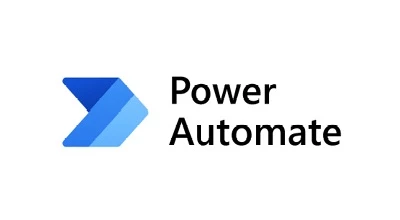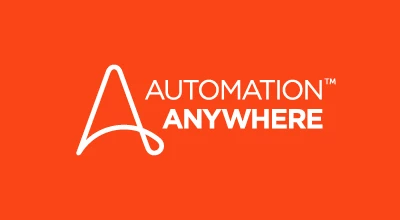RPA
Take your robotic process automation (RPA) to the next level


Equip your robots with the skills to understand content
Robotic process automation (RPA) is a technology that uses software robots to automate repetitive manual tasks traditionally done by humans. RPA software, often called a robot or simply a bot, can perform routine and repetitive tasks such as data entry and be programmed to execute keystrokes, mouse movements, and other actions.
While traditional RPA excels at handling basic, rule-based tasks, bots can also be enhanced with AI and smart technologies like natural language processing (NLP), pattern recognition, and automated learning to automate more complex processes. When paired with an intelligent document processing (IDP) solution, RPA bots can be upskilled to read and understand complex, unstructured documents, extract important data, and make informed decisions.
Why robotic process automation (RPA)?
Reduce costs
Accelerate digital transformation
Empower your team
How ABBYY complements RPA software
ABBYY helps maximize your RPA investment with intelligent document processing (IDP) and process intelligence capabilities. IDP equips your RPA bots with the intelligence needed to understand and process everything from simple, structured documents like tax forms to complex, unstructured ones like lease agreements. Process intelligence technologies measure the performance of your RPA investment.
Discover the best opportunities for RPA
Expand RPA capabilities
Maximize your RPA investment
Create customized models
Keep improving

Explore ready-to-use AI extraction models
for smarter RPA
Microsoft Power Automate®
ABBYY Vantage Connector for Microsoft Power Automate® provides seamless integration between the Vantage intelligent document processing (IDP) platform and Power Automate automating the processing of incoming documents.

SS&C Blue Prism®
The ABBYY Vantage Connector for Blue Prism provides seamless integration between the Vantage and Blue Prism automating the processing of incoming documents.

UiPath
The ABBYY Vantage Connector for UiPath provides seamless integration between the Vantage and UiPath automating the processing of incoming documents.

Automation Anywhere
The ABBYY Vantage Connector for Automation Anywhere enables seamless integration between Vantage IDP and Automation Anywhere RPA, allowing bots to intelligently process documents and extract data.

Robotic process automation—Use cases

Banking & financial services

Insurance

Healthcare

Transportation and logistics
Blog
What Is Robotic Process Automation (RPA)?
The real power of RPA comes when it’s combined with other intelligent technologies that improve the way companies handle complex data and orchestrate their workflows.

Blog
RPA vs. IPA: What’s The Difference?
Robotic process automation and intelligent process automation are both powerful tools for automating business processes, but with distinct differences. Let’s explore.
Blog
How Intelligent Process Mining Improves RPA Results
Learn how these two powerhouse technologies can work together to turbocharge your process optimization strategy and increase ROI.
Blog
What Is Robotic Process Automation (RPA)?
The real power of RPA comes when it’s combined with other intelligent technologies that improve the way companies handle complex data and orchestrate their workflows.

Blog
RPA vs. IPA: What’s The Difference?
Robotic process automation and intelligent process automation are both powerful tools for automating business processes, but with distinct differences. Let’s explore.
Blog
How Intelligent Process Mining Improves RPA Results
Learn how these two powerhouse technologies can work together to turbocharge your process optimization strategy and increase ROI.
RPA frequently asked questions (FAQs)
How does RPA software transform organizations?
Through automation, RPA changes the nature of how work gets done within a business. Think of all the repetitive, low-value tasks that employees perform every day. RPA can automate these activities and complete them at a lower cost, with greater accuracy and efficiency. This frees employees to focus on more enjoyable, value-creating work.
Advanced software bots are capable of complicated text interpretation, conversational abilities, and even more complex decision-making through machine learning models. This frees employees of the burden of needing to perform low-value, repetitive tasks, so they can focus on more important, more enjoyable, more value-creating work.
What are the important capabilities of RPA technology?
At its core, RPA technology automates structured, rule-based tasks that follow clear, repetitive steps. By reducing errors, working around the clock, and handling a high volume of routine processes, RPA can significantly increase operational efficiency and accuracy while lowering costs.
That said, effective RPA isn’t just about automating a single task or a series of disconnected tasks. To get the most value from RPA, you need to implement it with an approach that considers your business’s entire, end-to-end processes.
To start, your RPA solution should connect with your existing business systems so RPA bots can scale automation on an enterprise-wide level. And to maximize your investment, consider adding advanced capabilities like intelligent document processing (IDP) and process intelligence. With IDP, RPA bots gain cognitive abilities to interpret and extract process-critical data from unstructured content. Process intelligence further enhances RPA by enabling businesses to analyze and visualize workflows in real time and strategically implement bots where they’re needed most.
Why are so many enterprises implementing RPA?
One of the main reasons RPA is so popular is its versatility: It can be applied to a wide range of business processes across many industries. And since RPA integrates with legacy systems, enterprises can adopt it without disrupting their existing IT infrastructure.
RPA also lets businesses increase process capacity and speed throughput times while substantially reducing process errors and deviations. This provides a quick and high return on investment, especially compared to competing technologies. Finally, RPA allows employees to spend more time completing higher value work.
What is the difference between RPA and AI?
Artificial intelligence (AI) and robotic process automation (RPA) are separate technologies that complement each other. AI, including generative AI, allows machines to learn from data, reason, solve problems, and perform tasks that typically require human intelligence, RPA, in contrast, simply mimics specific actions, like typing on a keyboard or clicking a mouse.
Combining AI and RPA, however, creates a powerful tool that can interpret and learn, tackle unstructured data, and make context-based choices to automate complex processes.
Is RPA the same thing as cognitive automation?
How can business get started with RPA?
ABBYY partners with the leading vendors of RPA technology, including Blue Prism, UiPath, and Automation Anywhere. Our low-code, cloud-first intelligent document processing platform—ABBYY Vantage—lets business users equip their bots with the skills they need to intelligently process documents. In addition, ABBYY Timeline provides process intelligence capabilities to analyze workflows and identify opportunities for automation, further enhancing RPA effectiveness.
If you’re interested in learning how Vantage and Timeline can enhance your existing RPA solutions, or if you’d like to start your intelligent automation journey with ABBYY and our RPA partners, contact us today.
Request a demo today!
Schedule a demo and see how ABBYY intelligent automation can transform the way you work—forever.
